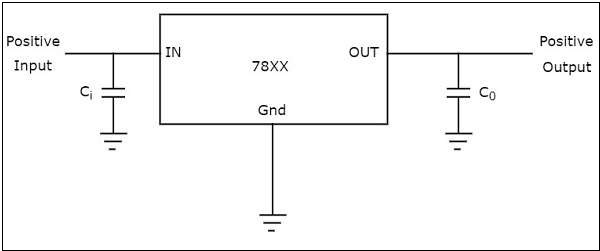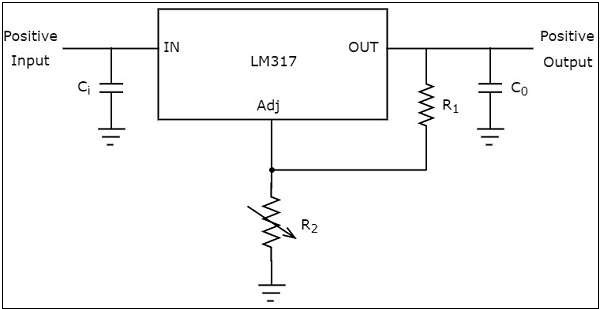
- Linear Integrated Circuits Applications
- Home
- Basics of Integrated Circuits Applications
- Basics Operational Amplifier
- Op-Amp applications
- Arithmetic Circuits
- Differentiator & Integrator
- Converters Of Electrical Quantities
- Comparators
- Log & Anti-Log Amplifiers
- Rectifiers
- Clippers
- Clampers
- Active Filters
- Sinusoidal Oscillators
- Waveform Generators
- 555 Timer
- Phase Locked Loop Ic
- Voltage Regulators
- Data Converters
- Digital to Analog Converters
- DAC Example Problem
- Direct Type ADCs
- Indirect Type ADC
- Useful Resources
- Quick Guide
- Useful Resources
- Discussion
Voltage Regulators
The function of a voltage regulator is to maintain a constant DC voltage at the output irrespective of voltage fluctuations at the input and (or) variations in the load current. In other words, voltage regulator produces a regulated DC output voltage.
Voltage regulators are also available in Integrated Circuits (IC) forms. These are called as voltage regulator ICs.
Types of Voltage Regulators
There are two types of voltage regulators −
- Fixed voltage regulator
- Adjustable voltage regulator
This chapter discusses about these two types of voltage regulators one by one.
Fixed voltage regulator
A fixed voltage regulator produces a fixed DC output voltage, which is either positive or negative. In other words, some fixed voltage regulators produce positive fixed DC voltage values, while others produce negative fixed DC voltage values.
78xx voltage regulator ICs produce positive fixed DC voltage values, whereas, 79xx voltage regulator ICs produce negative fixed DC voltage values.
The following points are to be noted while working with 78xx and 79xx voltage regulator ICs −
“xx” corresponds to a two-digit number and represents the amount (magnitude) of voltage that voltage regulator IC produces.
Both 78xx and 79xx voltage regulator ICs have 3 pins each and the third pin is used for collecting the output from them.
The purpose of the first and second pins of these two types of ICs is different −
The first and second pins of 78xx voltage regulator ICs are used for connecting the input and ground respectively.
The first and second pins of 79xx voltage regulator ICs are used for connecting the ground and input respectively.
Examples
- 7805 voltage regulator IC produces a DC voltage of +5 volts.
- 7905 voltage regulator IC produces a DC voltage of -5 volts.
The following figure shows how to produce a fixed positive voltage at the output by using a fixed positive voltage regulator with necessary connections.

In the above figure that shows a fixed positive voltage regulator, the input capacitor Ci is used to prevent unwanted oscillations and the output capacitor, C0 acts as a line filter to improve transient response.
Note − an get a fixed negative voltage at the output by using a fixed negative voltage regulator with suitable connections.
Adjustable voltage regulator
An adjustable voltage regulator produces a DC output voltage, which can be adjusted to any other value of certain voltage range. Hence, adjustable voltage regulator is also called as a variable voltage regulator.
The DC output voltage value of an adjustable voltage regulator can be either positive or negative.
LM317 voltage regulator IC
LM317 voltage regulator IC can be used for producing a desired positive fixed DC voltage value of the available voltage range.
LM317 voltage regulator IC has 3 pins. The first pin is used for adjusting the output voltage, second pin is used for collecting the output and third pin is used for connecting the input.
The adjustable pin (terminal) is provided with a variable resistor which lets the output to vary between a wide range.

The above figure shows an unregulated power supply driving a LM 317 voltage regulator IC, which is commonly used. This IC can supply a load current of 1.5A over an adjustable output range of 1.25 V to 37 V.